As you may have noticed I just arrived back from a sea trial with potential buyers on the Excess 14 sailing catamaran. It took place in Les Sables d´Olonne, which is always a pleasure to return to as this is one of the big hearts of French sailing culture – there´s always something to see here. Anyways, we´ve had our Excess 11 and one Excess 14 at the pontoon for sea trials and so I was happy to welcome our guests. We did not chat for all too long, but rather cast off the lines and took the boat out where she belongs.
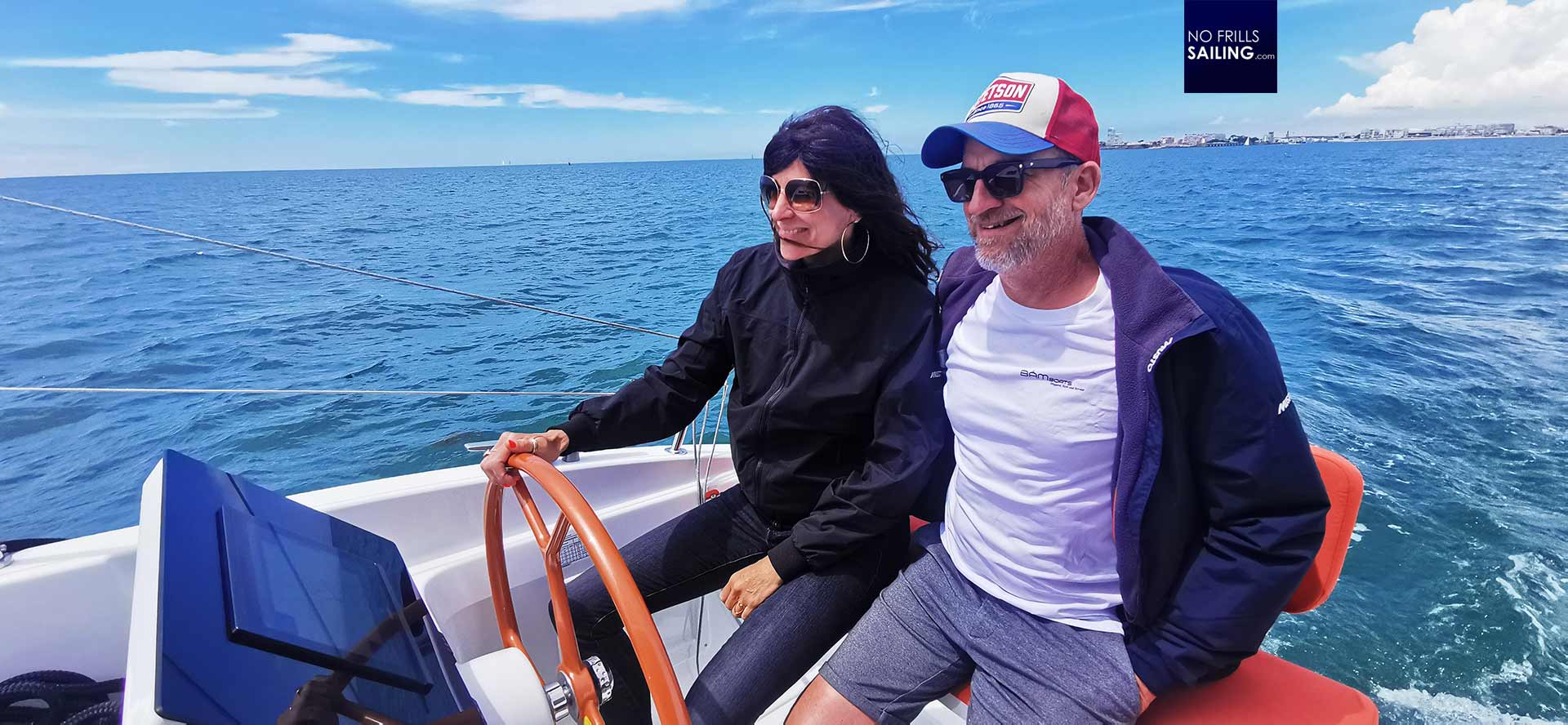
It was a glorious afternoon, perfect for a sea trial. I personally do not all too much fancy sea trials because the chance the guests are ending up in either too much wind or too low winds is pretty high. I´ve had this quite often, which always is a kind of frustrating for all, having undertaken the journey to the Atlantic ocean or the Med just to realize that the outcome isn´t that helpful. I would always prefer to do a yard visit which is much more insightful for a future owner and suggest to charter the desired boat of choice for a week – in this, you can learn much, much more and really “live” aboard. Anyway, this time conditions were absolutely perfect though …
Perfect conditions for a thorough sea trial
Since its inception two years ago the Excess 14 has been quite a good success in terms of sales. Some 80 units are underway. And I mean “underway”: A catamaran this size is much more often used for the real offshore adventures, circumnavigations and coconut route. That said, next to my guests and hopefully future owners, a couple from Australia and the New Zealand Excess dealer boarded the boat as well: A sign that this boat is serious.
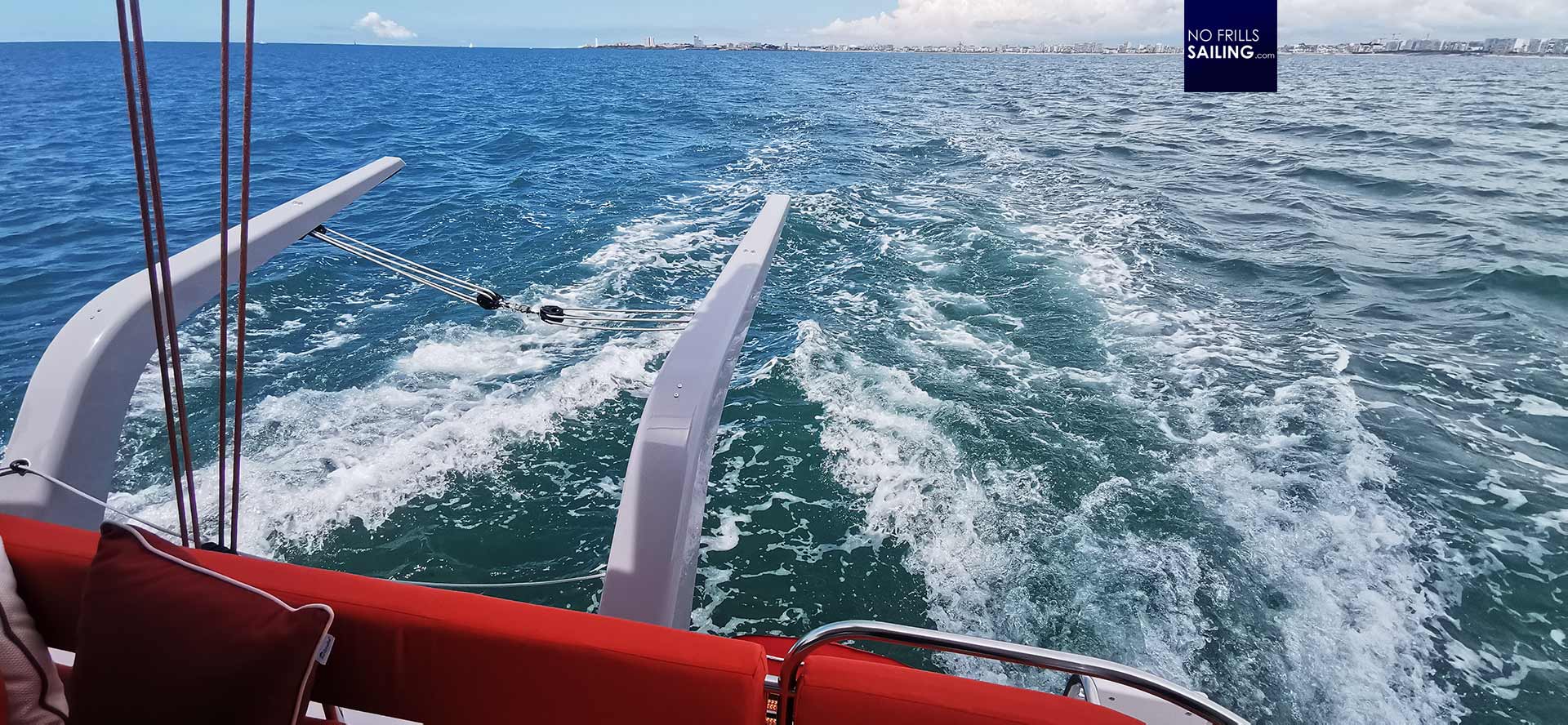
We dashed away from the French coastline after the sails went up. A nice breeze with constantly around 10 knots TWS was blowing, occasional puffs with 12 knots. A very light sea state with short waves was apparent. The sun was up, nice and warm, some light clouds prevented it from burning us. If all sea trials would have a weather guaranteed like this, I guess, I´d change my mind about those events. The crew aboard was as happy as can be.
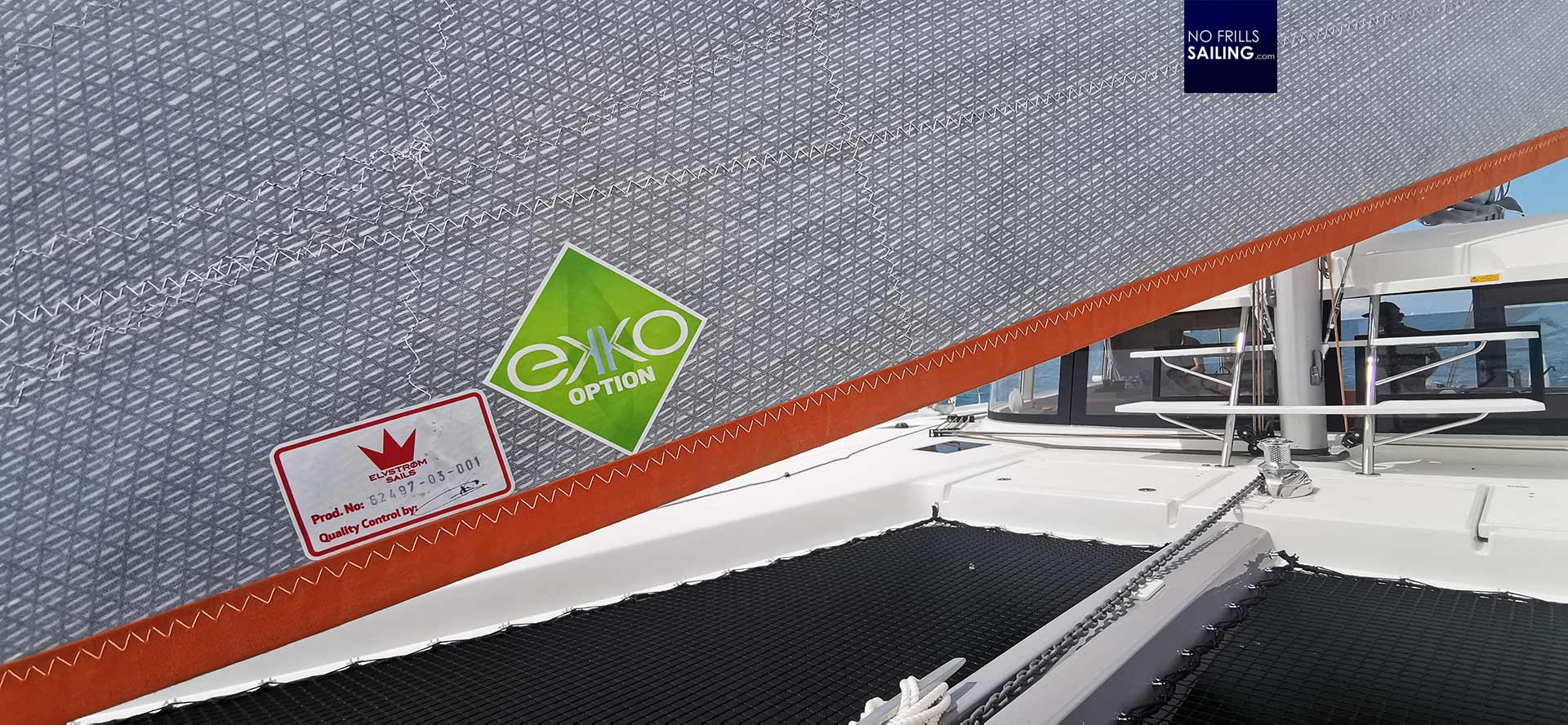
Our catamaran was equipped with the “Pulse Line” option. That´s a trim level in the price and options list of Excess which I would deem pretty much essential. You are not just getting a taller mast, hence more sail area and thus more power, you also get upgrade sail cloth. For the Excess this means the “Ekko” cruising laminates. It´s a cloth not unsimilar to the DCX-laminates but made from recycled material and itself recyclable. That means that for the sails plastic bottles are used, but also recycled Taffeta. In addition, at least that´s what the website says, the energy used to make the sails is sourced from green sources.
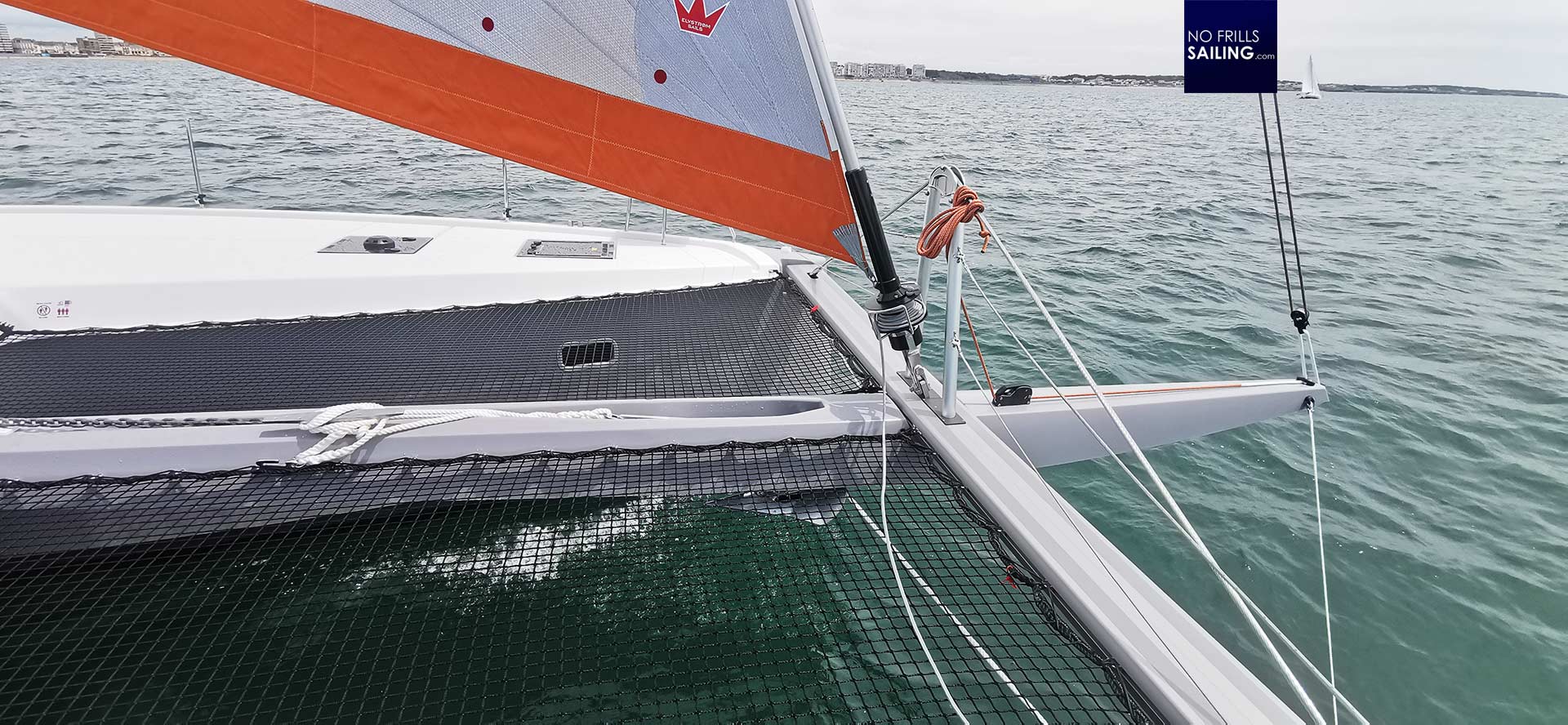
Anyways, the sails look fantastic and with a just a little trimming the catamaran accelerates. Here we are: At last I can check this boat in a real breeze! I´ve been on the Excess 14 in autumn last year in Port Ginesta where I had the chance to dash out with her as well. Unfortunately – remember what I wrote a few chapters before? – we´ve had absolutely no wind. Which was also very interesting because even in almoooost no breeze the catamaran really sailed, nevertheless, I prefer a proper breeze.
Real life check: Tacking a Genoa
Apart from checking out this boat in wind, the most interesting aspect of the Excess 14 in comparison to the Excess 11 was the Jib. On the Excess 11, on which I have some couple of hundred miles sailing experience myself, the Jib is a self-tacker, which has some very nice advantages but also the downside of, well, lacking sail area. For the Excess 11, by the way, from now on a Genoa is offered as well. Anyways, seeing how it really works to sail the catamaran with an overlapping Genoa was my big question and so I asked if they could perform a couple of tacks so that I could observe from different locations and do a proper documentation. Really, this is one of the most asked questions from people interested in this boat: How is it done? So, here we go …
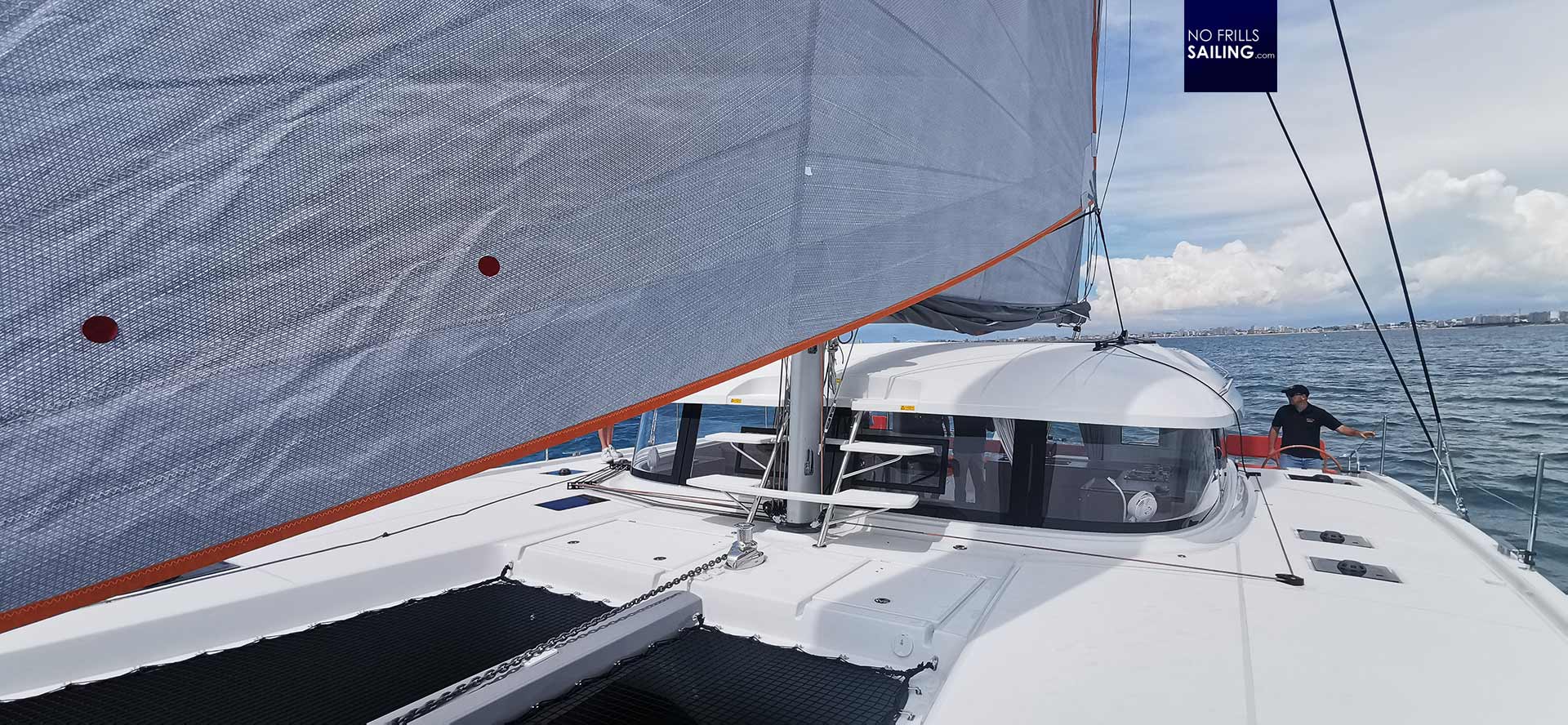
First of all, the speed with which the maneuver of tacking is performed surprised me. Yes, it was done by no other than Hervé Piveteau, Product boss of Excess and the authority when it comes to multihulls, but I can say that with a little practice (as with everything) this can surely be done by any other owner as well. So, after putting the now windward but future leeward (active) sheet loosely over the winch, Hervé secured the „old” sheet with some more turns on the winch and started turning.

The boat rushed into and through the wind with the Genoa starting to flutter. Hervé loosened the sheet, first with securing it on the winch, then letting it go completely the moment when the clew had passed the mast. Then he pulled the new sheet in.
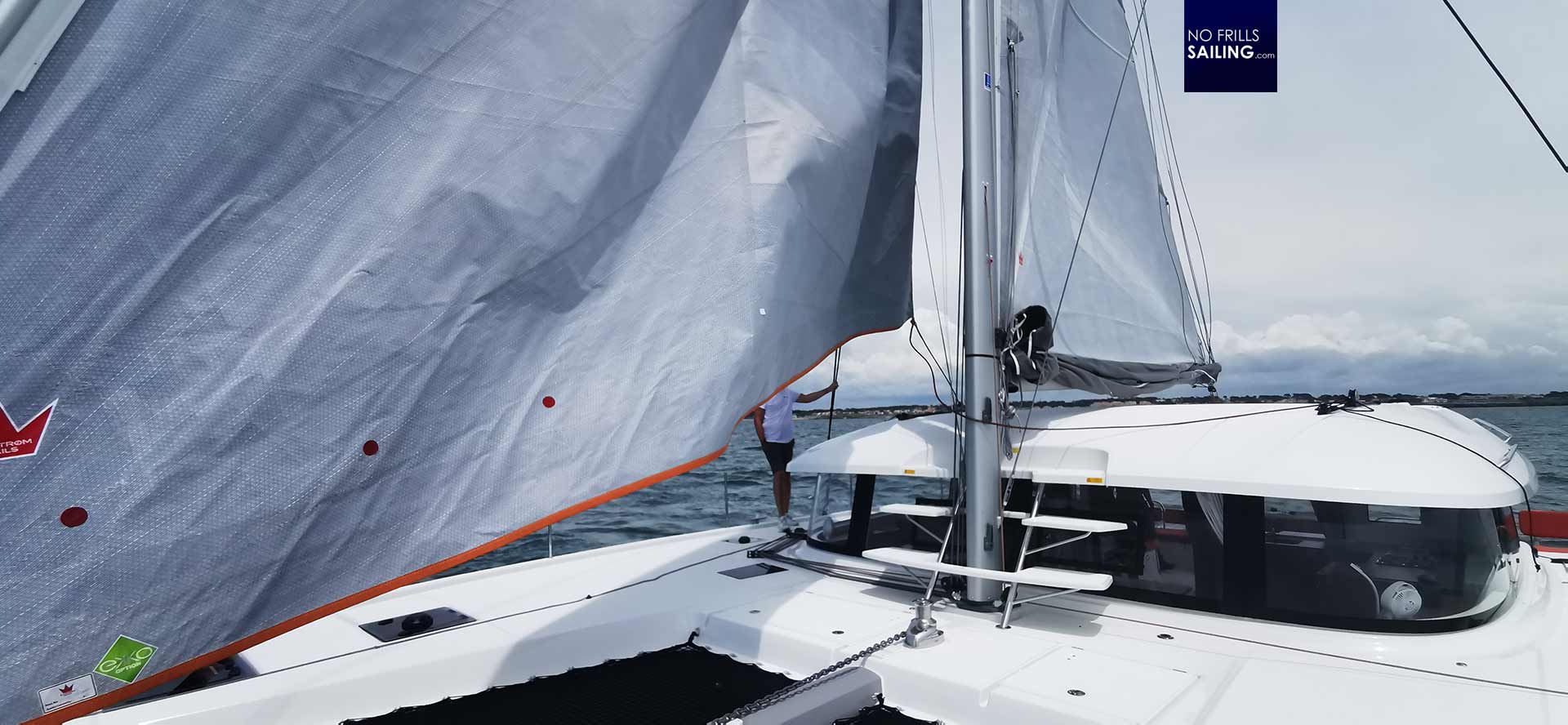
At a speed of some 8 knots and in the breeze as described above, this whole process took not more than 15 or 20 seconds. Very fast. When the new windward sheet was pulled tight by hand, our helmsman pulled out and recovered the boat on the new upwind point of sail. It took him just a few corrections on the wheel to put the cat exactly on the new course. Behold: It was one of our guests steering, not somebody from the shipyard. Apparently, the boat is very responsive. Every tacking maneuver just worked, no hustle.
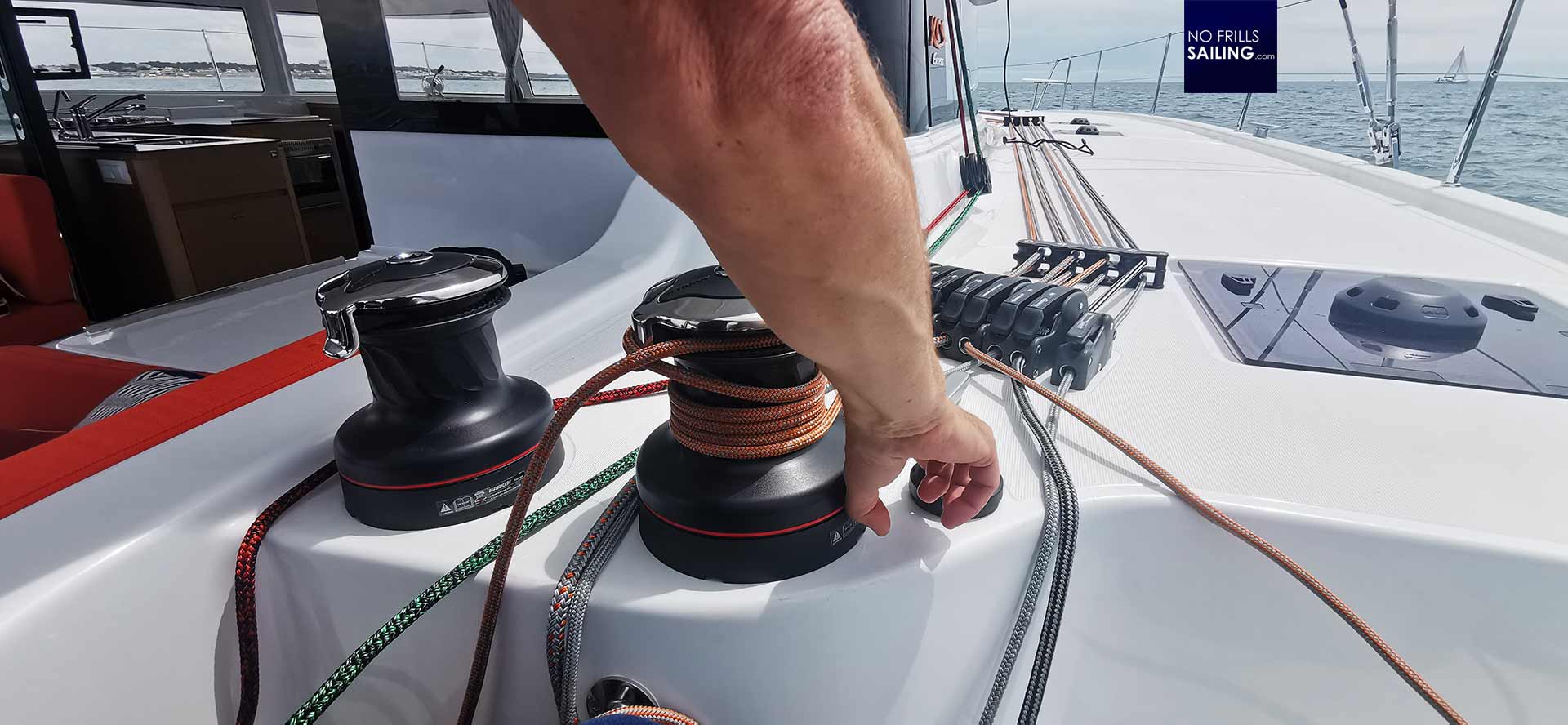
After that, Hervé just pushed the buttons of the electric winch to haul in the Jib. The loads on this massive sail are huge. One can use the handle but its much safer, much more stress-free and of course faster to use this push-button option. The same as with “Pulse Line” option I´d deem the electric winches a matter of course when opting for a boat this size!
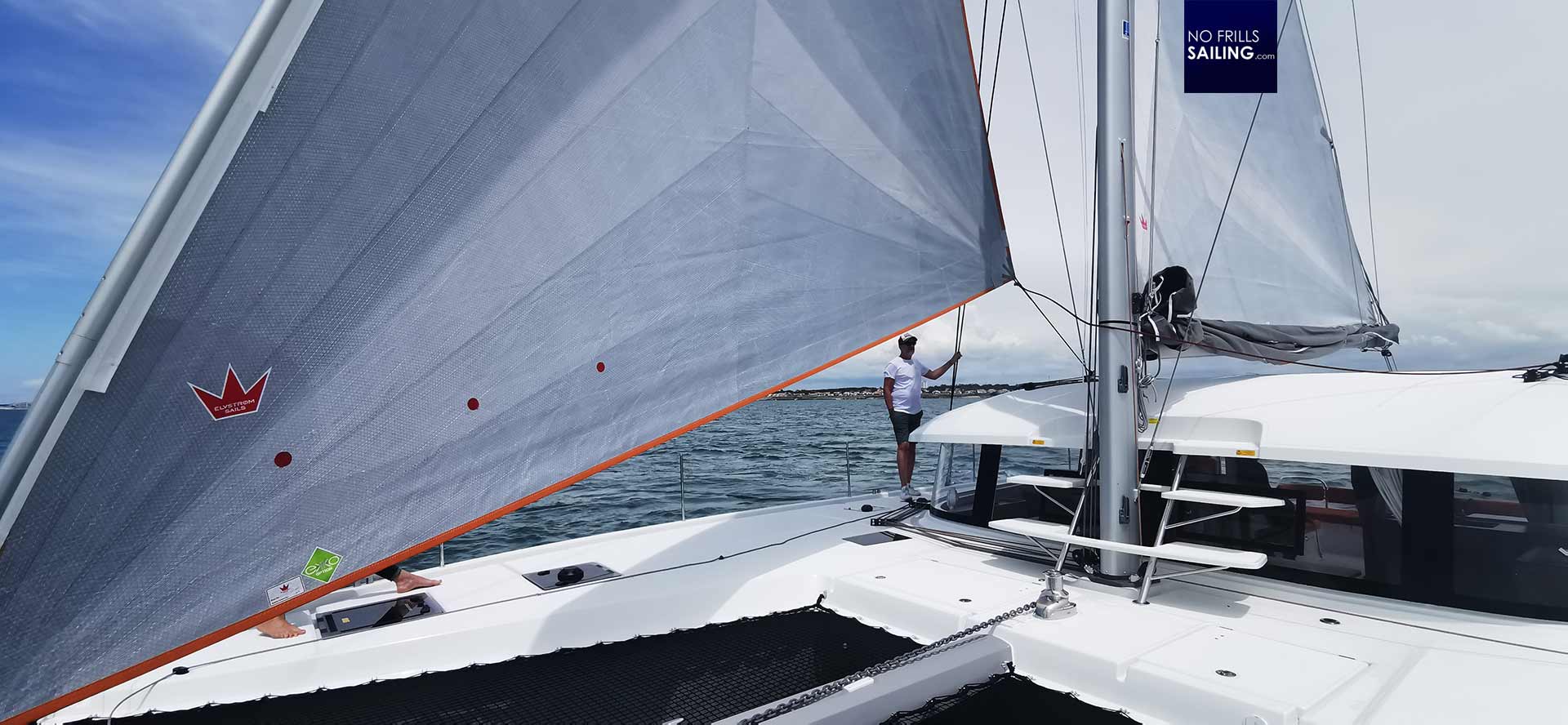
We tacked a couple of times and I placed myself in different observation points. From the cockpit, watching the two performaning the maneuvers, I noticed that in double handed mode both helmsman and sheeter are positioned in a way that neither of both will interfere with the other: Working the sheets and winches does not affect the view of the helmsman. A feature that is significantly important I´d say because I hate it when I steer and I can´t see anything or I am getting the winch handle slammed into my waist with every turn … Single-handed, of course, the steering will have to be performed by the auto pilot, which is no problem to train it, making a 90-degree course change upon pushing a button.
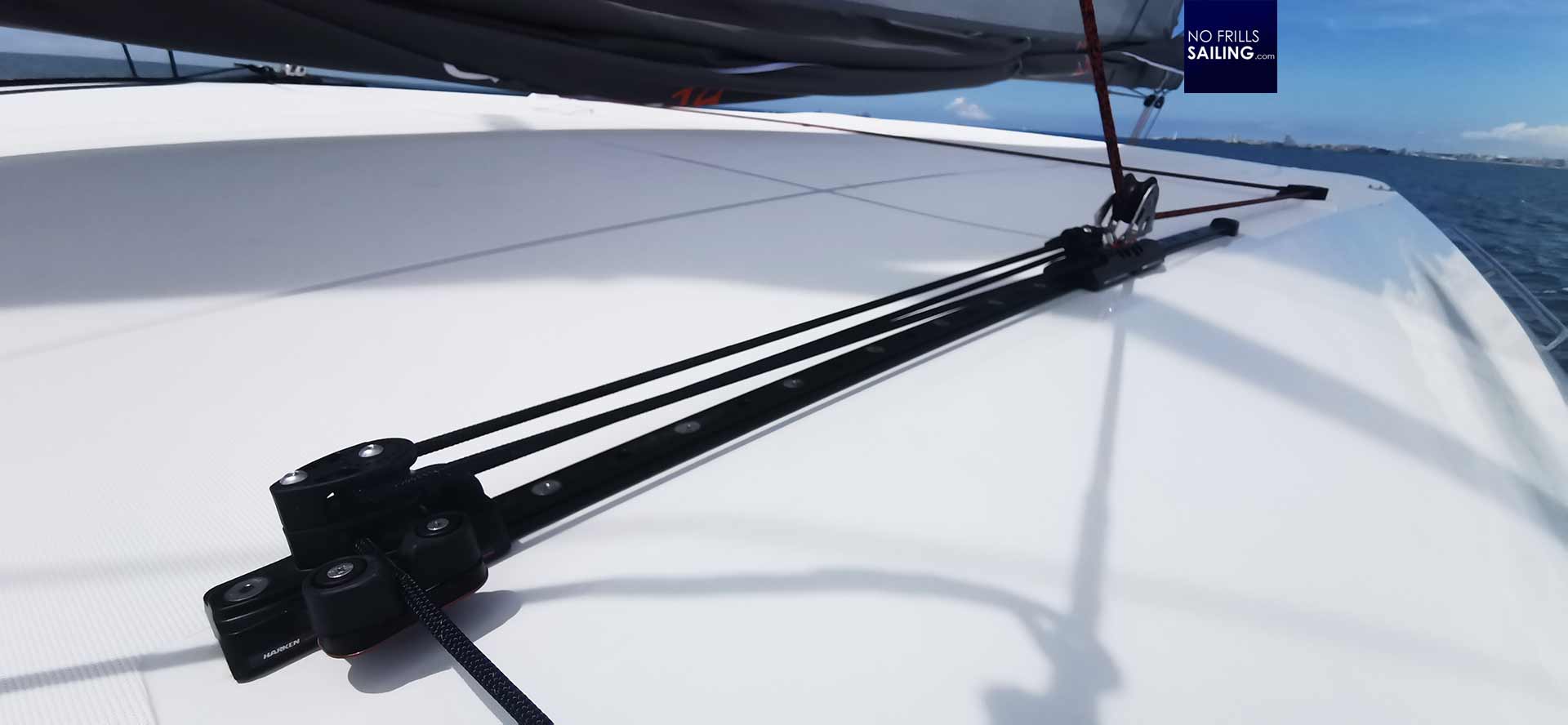
One thing that could maybe need some brain power – or it is simply not solvable unless significant and thus useless efforts are invested – is the fine trim of the Genoa. The sheet leads are positioned on the roof of the boat and each time you want to change it, you will have to go there to ease or pull the line. This is no problem in light conditions like we´ve had them during that day, but it will become a safety issue when done in pitch black or in harsh stormy conditions.
Trying out the Excess 14 on each point of sail
The boat just sails absolutely nice! I can tell you, it feels like being on a Volvo. She cuts through the water effortlessly whilst the wake is foaming with joy. She is a pretty fast boat, which corresponds to the videos and experiences of so many 14-crews. Our guests had previously chartered the Excess 11 for one week and told me that the steering was much more nimble on this boat and that from their point of view the boat sails much more lively than her smaller sister. I would´nt put this so strong, but would agree that related to the enormous size of the Excess 14, her feel on the rudder is amazingly lightfooted.
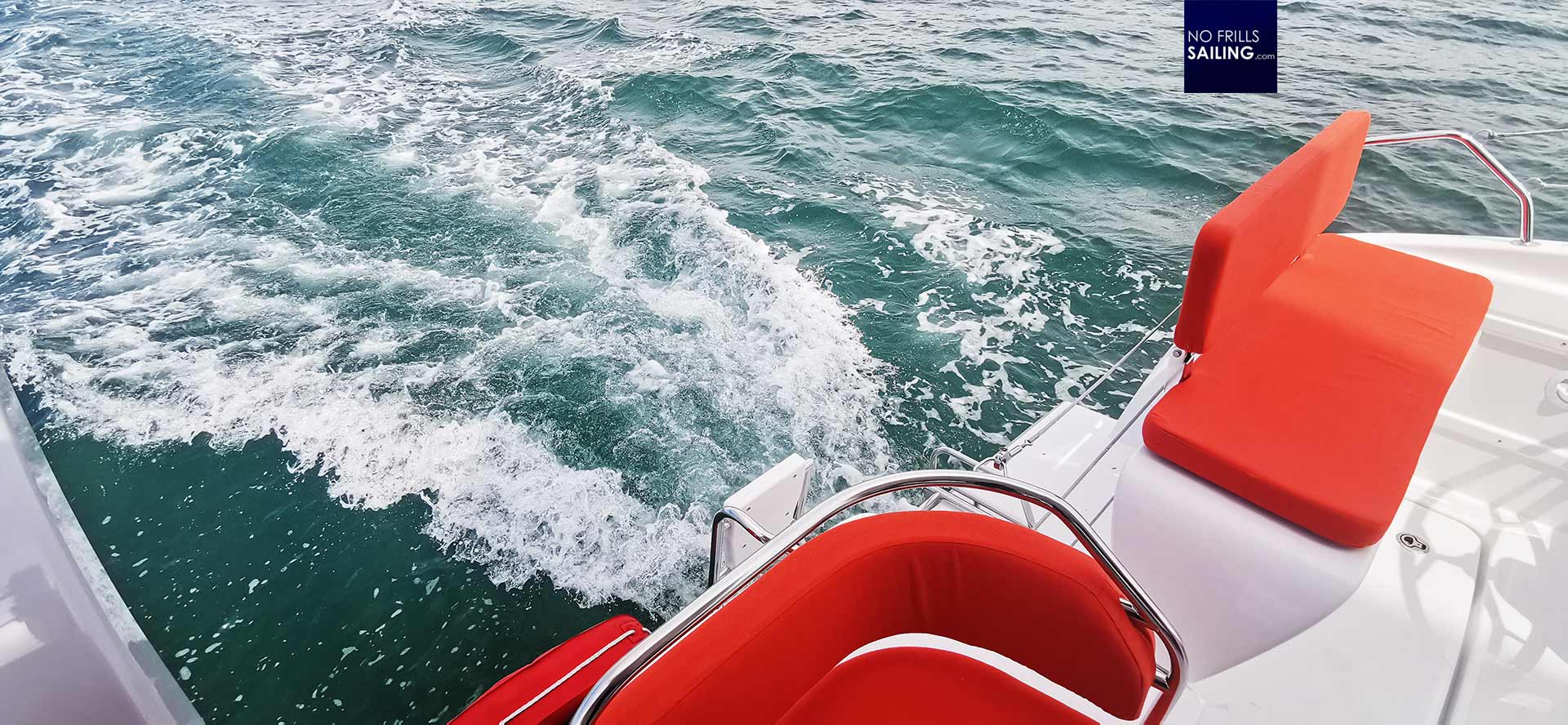
As they tried out the boat on the various points of sail, I shortly went down to check out the noise level. Of course, sailing, especially sailing on a catamaran, is something you have to get used to. The water rushing by the hull is making a constant “swoosh”. When sailing on a beam or broad reach, depending on the size of the waves, those masses of water will smack against the inner side of the second hull after passing underneath the first, windward, hull. This can often result in loud bangs. No matter how intricate and advanced the construction, this cannot be prevented. Nevertheless, I found nothing annoying or unusual, except maybe for the constant humming of the fixed blade propeller.
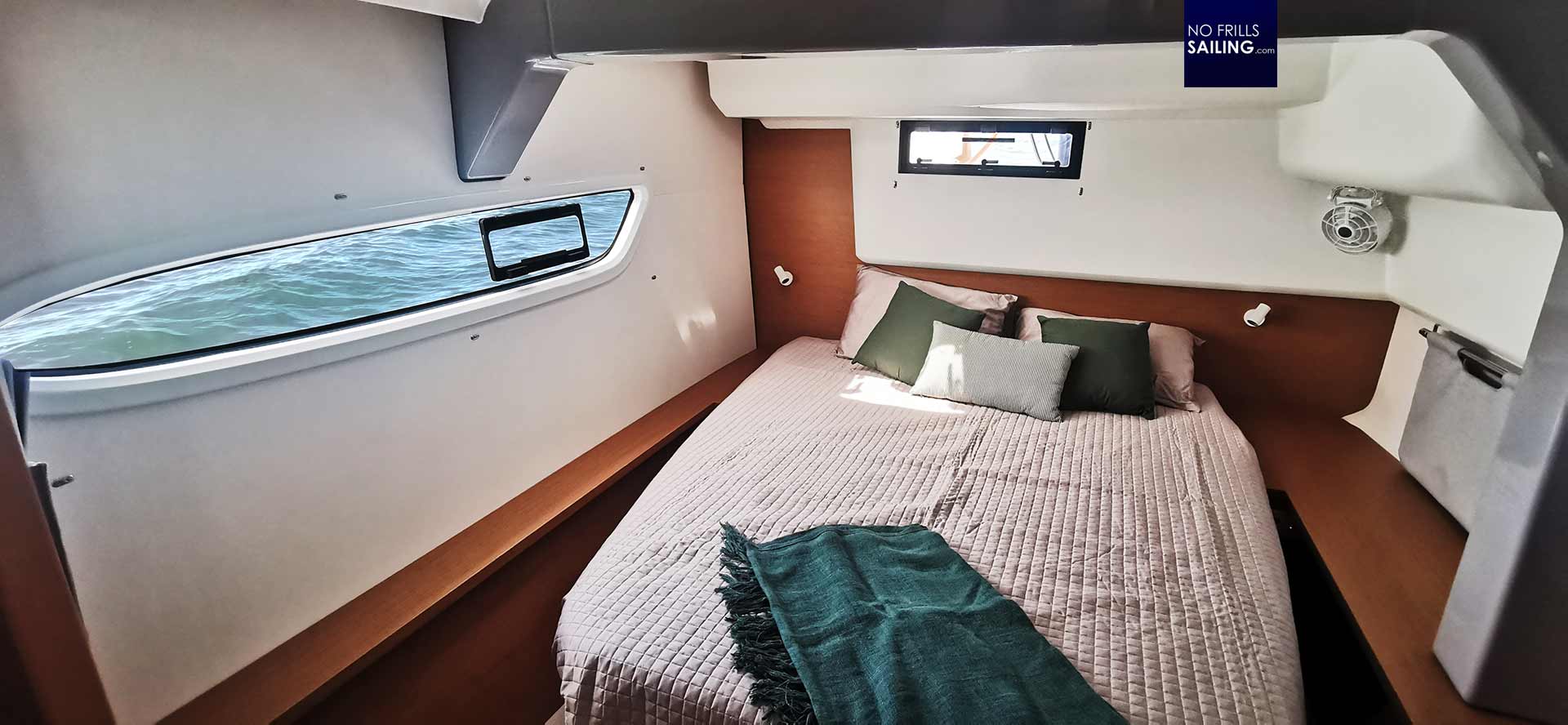
The shipyard offers a folding prop, you may know that I am a huge fan of feathering props which in my opinion have the best compromise between being “switched off” when sailing and actively pushing when engine is switched on. As we were constantly sailing at around 7 to 8.5 knots, the fixed blade, however, made a loud noise that I found very enervating – this would ruin my watch below seeking the much desired sleep for sure.
Tweaking the sails with Hervé Piveteau
Up on deck, Hervé was in his element. Our guests showed their interest in sails trim and, why not? You never stop learning! Hervé is a keen sailor and I know it from myself that as a skipper you cannot let go if the sails won´t be standing sharp and nicely trimmed. For the Genoa I´ve shown the sheet leads, for the mainsail its even easier to find the best fine trim.
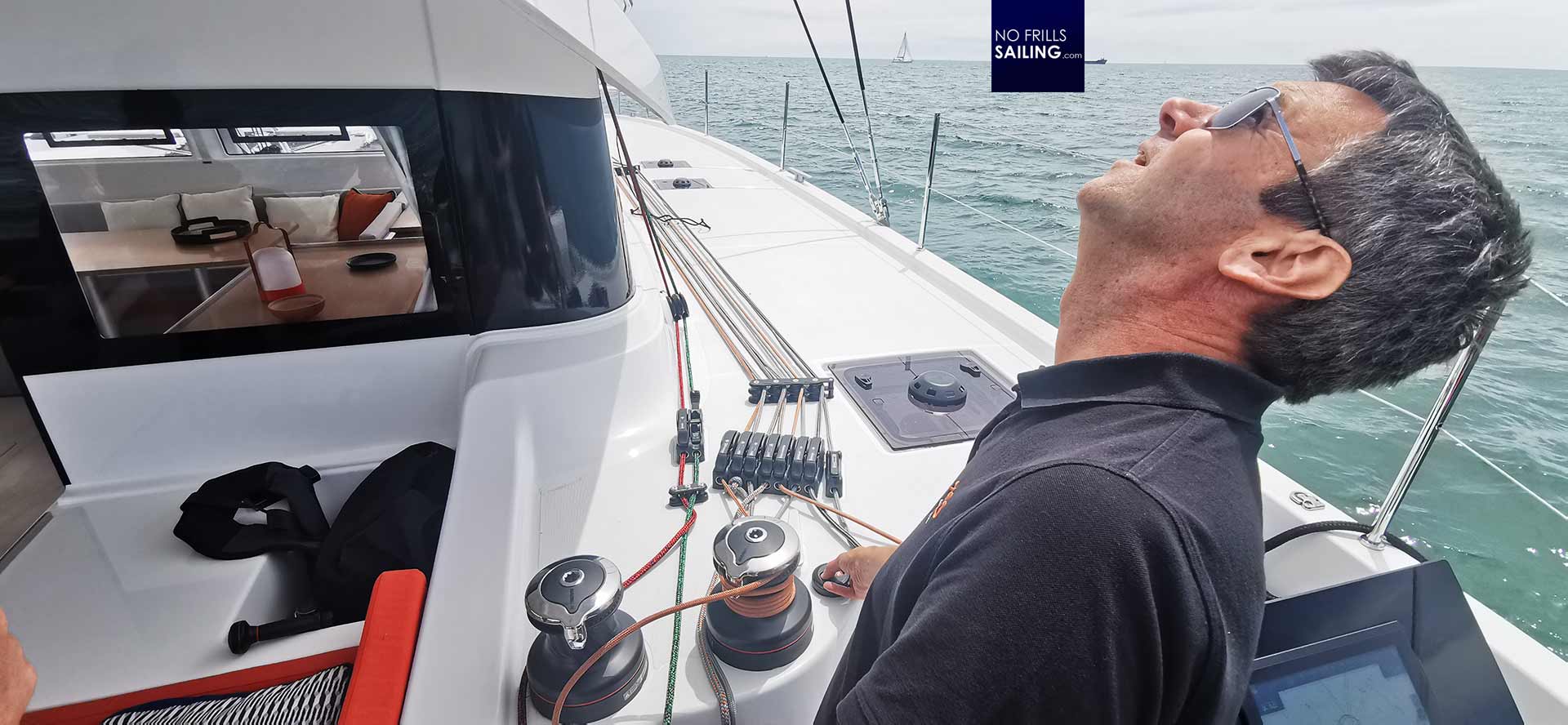
Mainsheet is operated from the two working winches and of course in electric way. Both helmsman and sheeter have a perfect view onto the sail as well as to the Windex in the mast top. I often hear the argument that the large overhanging solid roof of the Excess boats obstruct the view to the top, but I´d day it is the best compromise here between shadow/rain-protection and a clear sight from the steering.

Fine tuning the mainsail is done via proper mainsheet traveler. It is mounted behind the rear settee at the end of the cockpit. Hence, the mainsheet´s connection to the boom is positioned much to the aft end of the boom as possible. This reduces the loads on the whole structure – something I really don´t like about modern (monohull) cruisers by the way where, for the sake of an empty cockpit, the mainsheets are put way in front of the boom´s halfway.
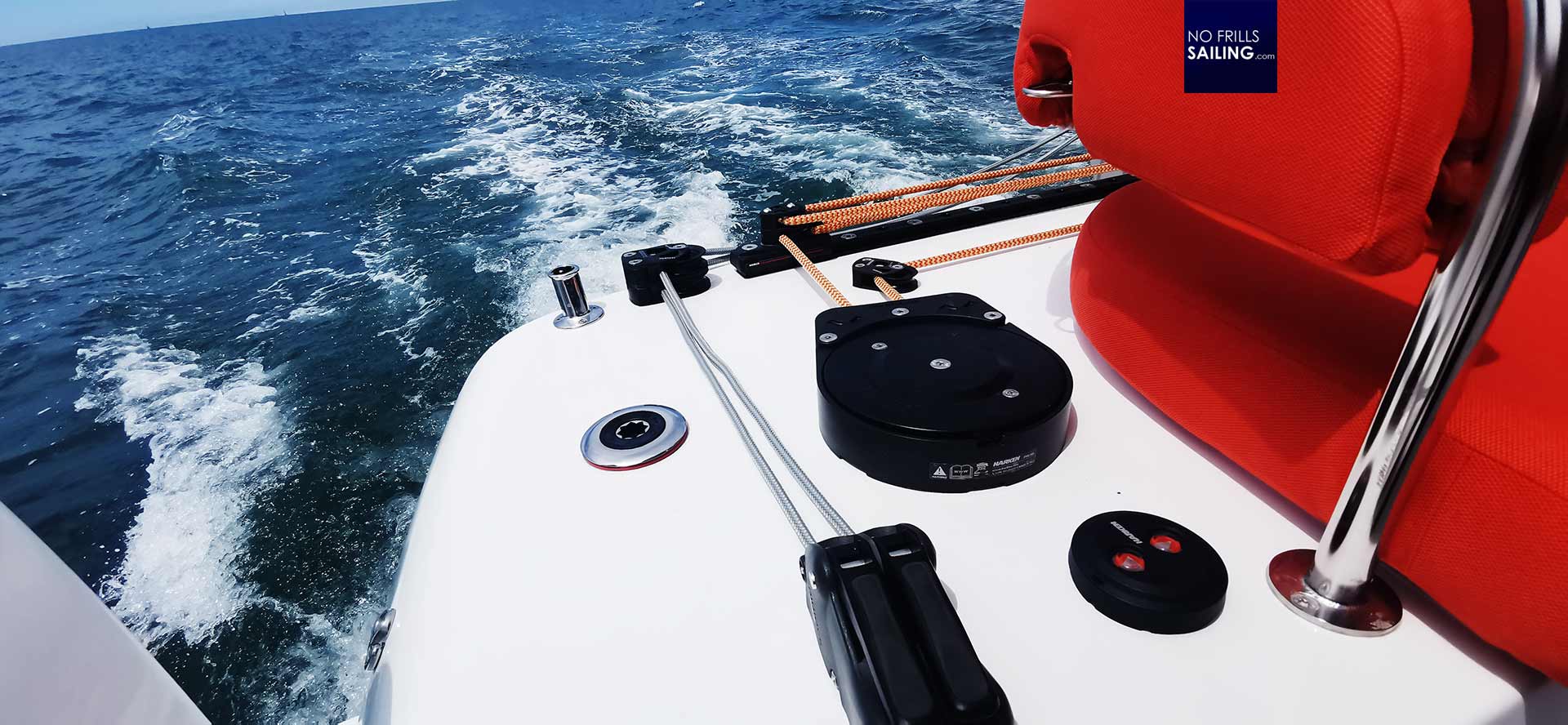
Utilizing the mainsheet traveler is done by pushing a button as well. No sheet mingling here – you just haul it in our out, the flat deck furler purrs and works just beautifully. I really love this solution as there are no ends of this line. And thus there isn´t any sheet-mumbling around in the cockpit since the line is a loop and furled endlessly. Definitely a very smart, safe and comfortable solution you should opt for.
Learnings
Any sea trial with us officially lasts about 1.5 hours. This time, partially because of the fact that there wasn´t an immediate follow-up appointment on the 14 and partially because it was such a beautiful, glorious fun day with great people on board, we stayed out more than 2 hours in fact. There´s always something to talk about amongst sailors, for sure! At one occasion we had been back in the harbor entrance of Les Sables when they gybed and dashed out another time.
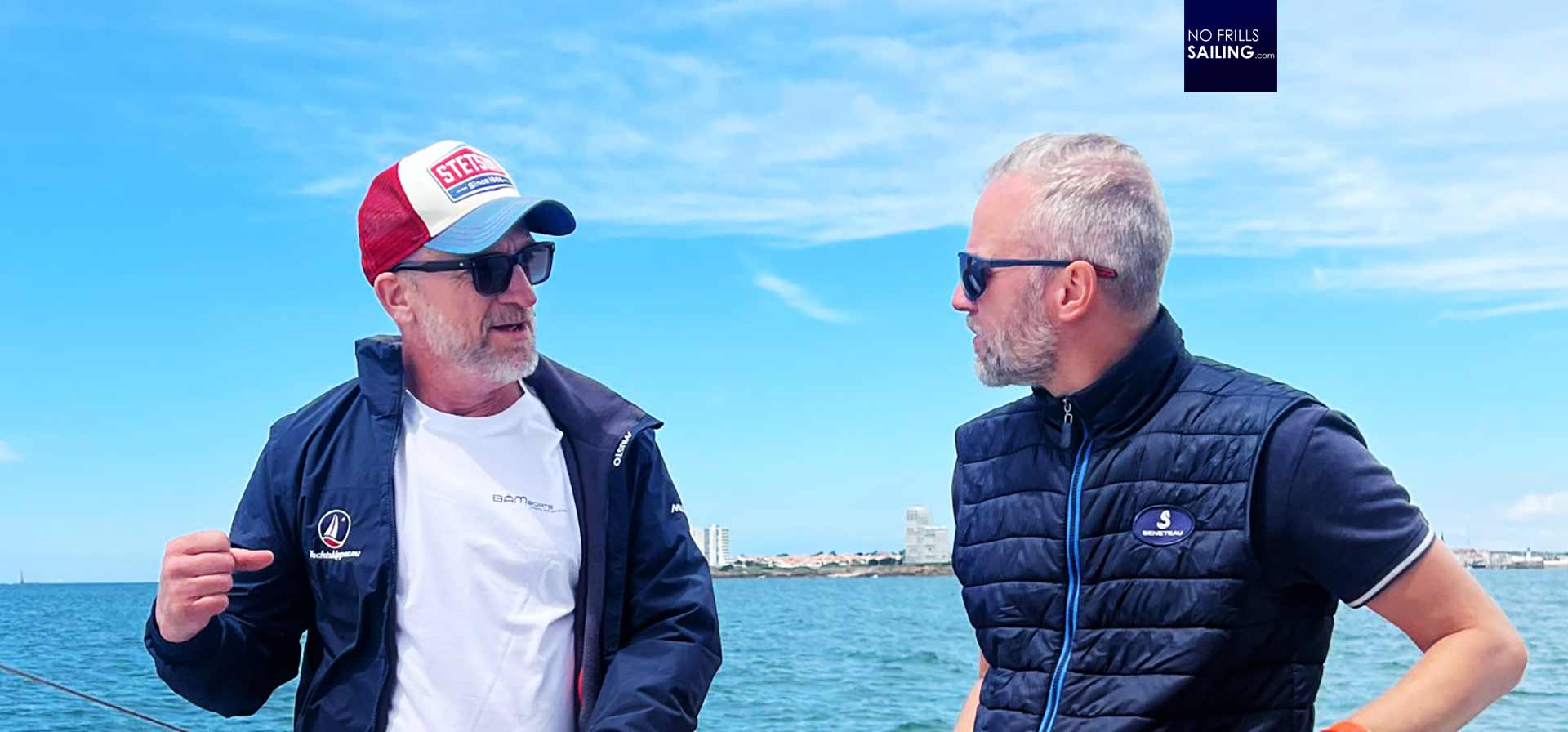
My guests, now having tried both of the Excess catamarans, had a very interesting “verdict”: They said that if the stunning layout and richness of the masterful interior or the Excess 11 (especially the owner´s hull) and the superior, powerful sailing capabilities of the Excess 14 could be put together, that would be their dream boat for sure.
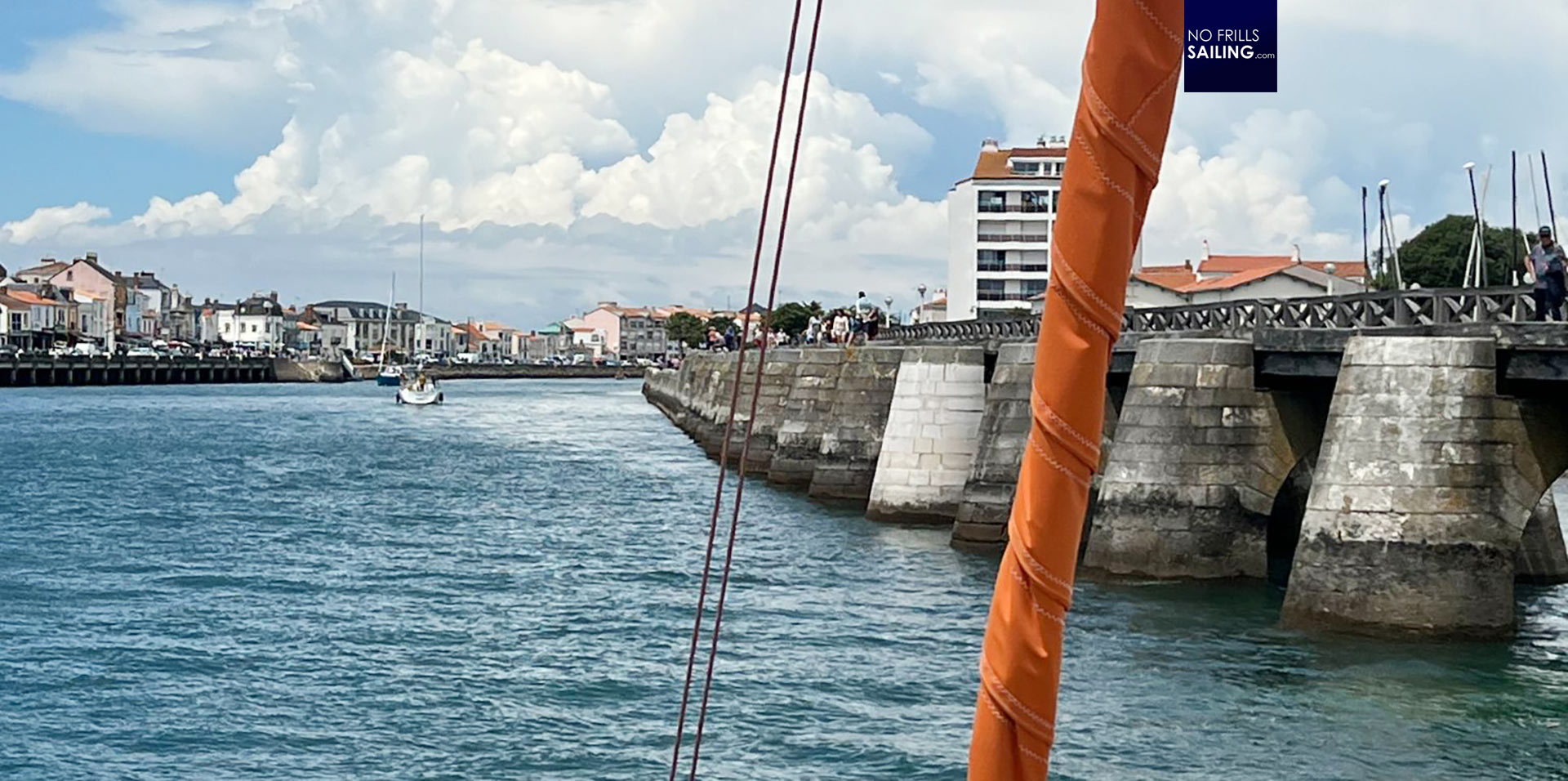
Hearing this, Hervé smiled knowingly: Maybe this is what the new upcoming Excess is all about? There will be a new boat announced in a few weeks with a full scale model revealed during Cannes Yachting Festival in September of the new 13 meter Excess. With still any details pretty much a secret, that much he could reveal that the designers and the shipyard had worked very hard to put this feedback (and my guests apparently aren´t alone with that) is turned into a real boat. What I can say in the end is that the Excess 14 although being a huge boat … and I mean she is a really big as boat for sure! … sails absolutely gorgeous. Her behavior and seakindness is exemplary, the work of VPLP and the designers at Excess has definitely paid off. She is a great passage maker, a fast boat that definitely can be operated by “normal” average skippers.
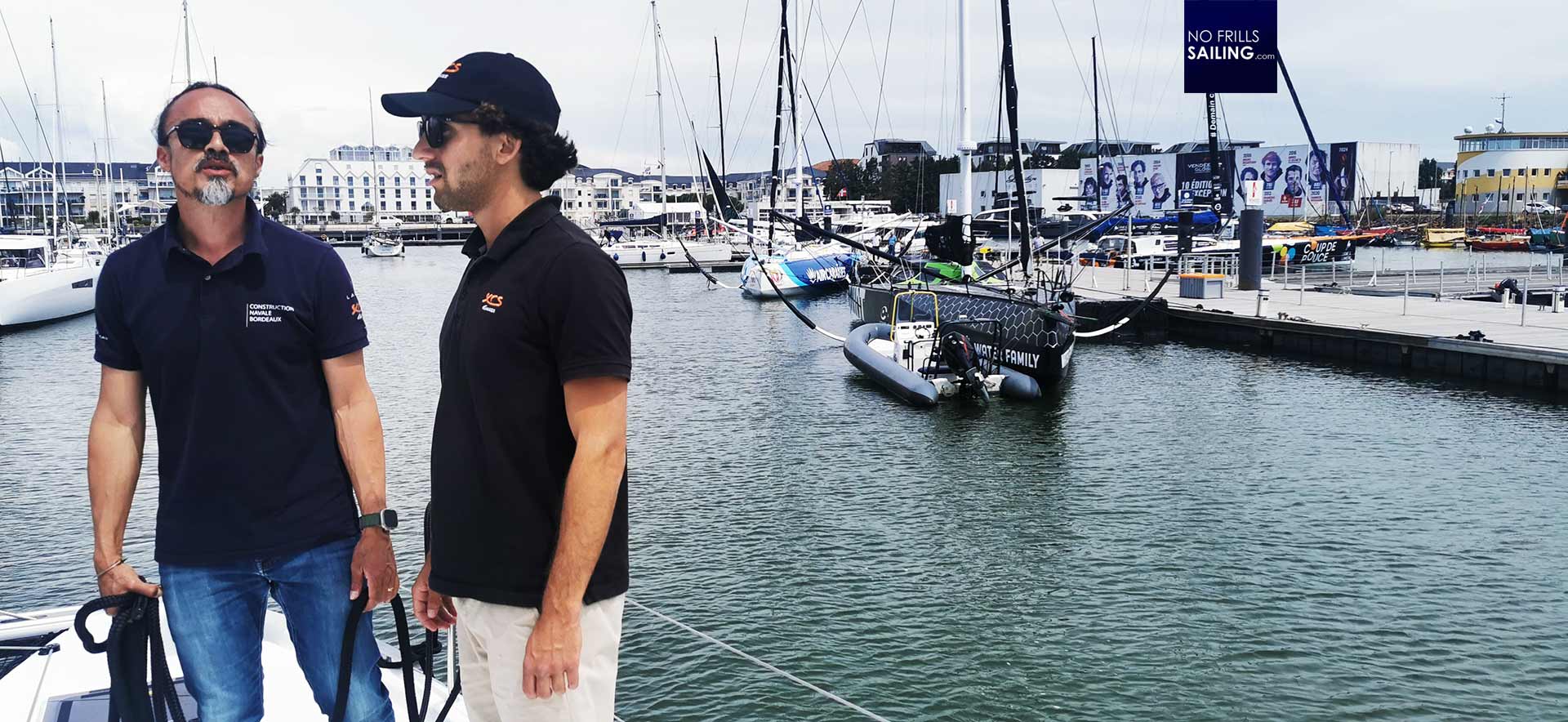
Bringing her back to her berth in Les Sables right next to the amazing IMOCAs was a special highlight for me: As a die-hard monohull-freak I still find berthing the biggest challenge for me personally, but the skippers amazed me once more how easy they put her back to the pontoon. And this is what this brand is all about: Making sporty quick sailing performance available for normal people, families and retirees who seek sensations but don´t want to buy an all-out racing machine. Her high speeds will allow for quick passages and safety margin when reacting to bad weather approaching – at the same time, she isn´t that complicated, demanding or nervous to operate. A very enlightening sea trial this time!
More articles on the Excess 14:
About the asymmetric hulls by VPLP
First sea trial in a near calm (also very interesting!)
Inside the Excess shipyard
